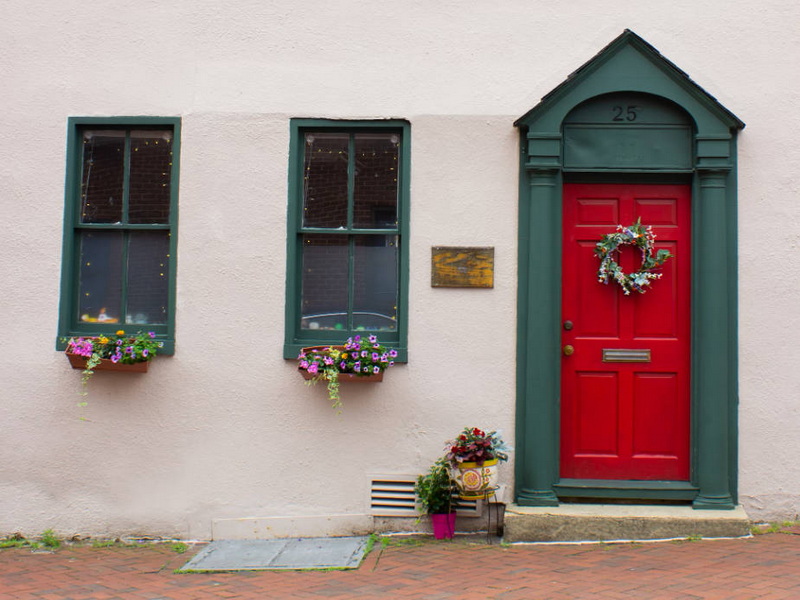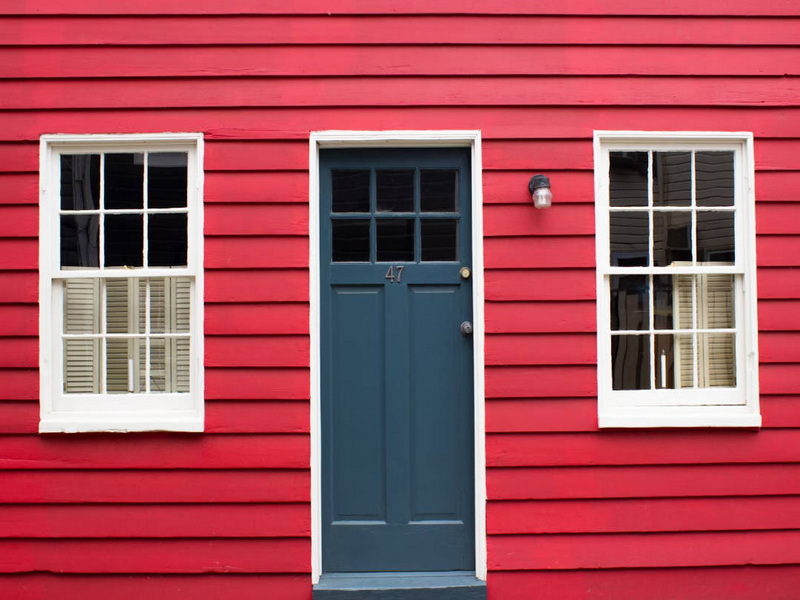English 




Views: 222 Author: Astin Publish Time: 2025-02-14 Origin: Site



Content Menu
● Assessing the Condition of Your Aluminum Windows
● Essential Tools and Materials
>> Abrasives:
>> Tools:
● Step-by-Step Restoration Process
>> Cleaning the Aluminum Frames
>> Repairing Scratches and Dents
>> Repairing or Replacing Weatherstripping
● Maintenance Tips for Aluminum Windows
● FAQ
>> 1. How often should I clean my aluminum windows?
>> 2. What is the best way to remove oxidation from aluminum window frames?
>> 3. Can I paint my aluminum windows?
>> 4. How do I prevent my aluminum windows from sticking?
>> 5. When should I replace my aluminum windows instead of restoring them?
Aluminum windows, prized for their durability and sleek appearance, can suffer from wear and tear over time. Factors such as oxidation, scratches, and general grime can diminish their aesthetic appeal and functionality. Fortunately, restoring aluminum windows is a manageable task that can significantly extend their lifespan and revive their original luster. This comprehensive guide provides detailed steps and essential tips for effectively restoring aluminum windows, ensuring they look and function like new.
Before embarking on the restoration process, it's crucial to thoroughly assess the condition of your aluminum windows. This initial evaluation will help determine the extent of the damage and the specific steps required for restoration. Look for common issues such as:
- Oxidation: A white, powdery residue on the surface of the aluminum, indicating corrosion.
- Scratches and Dents: Physical imperfections that detract from the window's appearance.
- Grime and Dirt: Accumulated dirt and debris that dull the finish.
- Faulty Locks and Hardware: Malfunctioning locks, handles, and other hardware components.
- Damaged Weatherstripping: Worn or cracked weatherstripping that compromises the window's insulation.
- Broken Glass: Cracks or shatters in the window pane.
Identifying these problems early allows for a targeted approach, ensuring that the restoration process addresses all necessary areas.

Having the right tools and materials is essential for a successful aluminum window restoration. Here's a list of items you'll need:
- Soap and Water: For general cleaning.
- Citrus Cleaner: Effective for removing oxidation.
- White Vinegar: Helps break down stubborn grime.
- Aluminum Cleaner: Specifically formulated for aluminum surfaces.
- Soft Cloths and Rags: For wiping and polishing.
- Non-Abrasive Scouring Paste: For removing tougher stains.
- Sandpaper (220-grit and 400-grit): For smoothing out scratches and preparing surfaces.
- Steel Wool: For removing oxidation.
- Putty Knife: For removing old glazing and applying putty.
- Heat Gun: To soften hardened putty or soften aluminum when addressing dents.
- Rubber Mallet: For gently reshaping bent frames.
- Caulking Gun: For applying sealant.
- Safety Glasses and Gloves: For personal protection.
- Aluminum Repair Putty: For filling in scratches and dents.
- Aluminum Etching Primer: To prepare the surface for painting.
- Epoxy-Based Paint: Designed for metal surfaces.
- Silicone Sealant: For creating a waterproof seal.
- Weatherstripping: To replace worn insulation.
- Replacement Glass Pane: If the existing glass is broken.

The first step in restoring aluminum windows is thorough cleaning. This removes dirt, grime, and light oxidation, providing a clean surface for further restoration work.
1. Prepare the Cleaning Solution: Mix mild soap with warm water. For tougher stains, use a solution of white vinegar and water.
2. Apply the Solution: Use a soft cloth or sponge to apply the cleaning solution to the aluminum frame.
3. Scrub the Surface: Gently scrub the frame to remove dirt and grime. For oxidized areas, use a citrus cleaner or non-abrasive scouring paste.
4. Rinse Thoroughly: Rinse the frame with clean water to remove any soap or cleaning residue.
5. Dry the Frame: Use a clean, dry cloth to wipe the frame, ensuring no moisture remains.
Oxidation is a common problem with aluminum windows, resulting in a white, powdery residue that mars the surface. Here's how to remove it:
1. Prepare the Area: Ensure the frame is clean and dry.
2. Apply a Citrus Cleaner: Apply a citrus cleaner to a soft cloth.
3. Scrub the Oxidation: Gently scrub the oxidized areas with the cloth until the residue is removed.
4. Rinse and Dry: Rinse the frame with water and dry thoroughly.
5. Apply Protective Coating: Apply a product like Everbrite Coating to protect the aluminum from UV, corrosion, and salt water.
Scratches and dents can be unsightly, but they are relatively simple to repair using aluminum repair putty.
1. Clean the Damaged Area: Thoroughly clean the scratched or dented area to remove any dirt or debris.
2. Apply Aluminum Repair Putty: Take a small amount of aluminum repair putty and fill in the damaged area. Smooth it out for an even finish.
3. Let it Dry: Allow the putty to dry completely according to the manufacturer's instructions.
4. Sand the Surface: Once dry, sand the area gently with 220-grit sandpaper, followed by 400-grit for a polished look. This will make it flush with the rest of the frame.
5. Prime and Paint: Apply an aluminum etching primer to the area. Once dry, apply an epoxy-based paint designed for metal surfaces to match the existing color.
Severely bent frames can affect the window's functionality and appearance. Here's how to address them:
1. Heat the Aluminum: Use a heat gun to soften the aluminum, moving constantly to avoid overheating.
2. Gently Bend Back into Shape: Use a rubber mallet along with wooden blocks to gently bend the frame back into its original shape, protecting the surface finish.
3. Allow Cooling: Allow the aluminum to cool naturally before reassessing the alignment.
Damaged or worn weatherstripping can lead to drafts and energy loss. Replacing it is a straightforward process.
1. Remove Old Weatherstripping: Carefully remove the old weatherstripping, noting how it was installed.
2. Clean the Area: Clean the area where the weatherstripping fits to remove any residue.
3. Cut New Weatherstripping: Cut the new weatherstripping to the correct size.
4. Install the New Weatherstripping: Press the new weatherstripping firmly into place.
5. Test the Window: Test the window to ensure proper sealing.
A faulty lock can compromise security. Here's how to address it:
1. Remove the Old Lock Mechanism: Remove the old lock mechanism from the window frame.
2. Clean the Area: Clean the area and check for any damage to the frame.
3. Install the New Lock: Install the new lock, ensuring proper alignment.
Replacing broken glass requires careful handling to avoid injury.
1. Safety First: Wear safety glasses and cut-proof gloves to protect yourself from sharp edges.
2. Remove the Broken Pane: Remove the glazing strips or rubber gasket holding the glass in place. Carefully remove any remaining glass shards.
3. Prepare for New Glass: Measure the opening precisely, subtracting 1/8 inch from both height and width to allow for expansion.
4. Install the New Glass: Apply a continuous bead of silicone sealant around the frame where the glass will sit. Carefully place the new glass pane into the frame. Secure the glass with glazing points if necessary. Replace the glazing strips or rubber gasket.
5. Apply Sealant: Apply a new bead of sealant around the edges of the glass for added protection.
After cleaning, repairing, and painting, it's time to reinstall the hardware.
1. Gather the Hardware: Gather all the screws, handles, and locks that you removed earlier.
2. Check and Clean Each Piece: Check each piece to ensure it's clean and in good condition. If any parts are damaged, replace them with new ones.
3. Reinstall the Hardware: Follow these steps to reinstall the hardware:
Align the hardware with the screw holes.
Insert the screws and tighten them carefully.
Test the functionality of the hardware to ensure it works smoothly.
Regular maintenance can significantly extend the life of your restored aluminum windows. Here are some tips to keep them in top condition:
- Regular Cleaning: Clean the frames regularly with soap and water to prevent the buildup of dirt and grime.
- Lubrication: Lubricate moving parts, such as locks and hinges, with silicone spray to ensure smooth operation.
- Inspect Weatherstripping: Check weatherstripping regularly and replace it as needed to maintain a good seal.
- Seal Gaps: Seal any gaps between the window frame and the wall with caulk to prevent drafts and water damage.
- Protective Coatings: Apply protective coatings that shield against UV rays, corrosion, and salt water.
Restoring aluminum windows is a worthwhile investment that can enhance the appearance and functionality of your home. By following the detailed steps outlined in this guide, you can effectively address common issues such as oxidation, scratches, and damaged hardware. Regular maintenance and prompt repairs will further extend the life of your windows, ensuring they continue to provide beauty and efficiency for years to come. With the right tools, materials, and techniques, restoring aluminum windows is a manageable DIY project that delivers significant returns.

It is recommended to clean your aluminum windows at least twice a year, or more frequently if you live in an area with high levels of dust or pollution. Regular cleaning prevents the buildup of grime and oxidation, keeping your windows in good condition.
The best way to remove oxidation is by using a citrus cleaner or a non-abrasive scouring paste. Apply the cleaner to a soft cloth and gently scrub the oxidized areas. Rinse thoroughly with water and dry the frame. For added protection, apply a protective coating after cleaning.
Yes, you can paint your aluminum windows. First, clean the frames thoroughly and sand them lightly with fine-grit sandpaper. Apply an aluminum etching primer, and then use an epoxy-based paint designed for metal surfaces. This will ensure the paint adheres properly and provides a durable finish.
To prevent your aluminum windows from sticking, clean the tracks thoroughly to remove any dirt and debris. Apply a silicone spray lubricant to the tracks and moving parts. Also, check for any misalignment and adjust the sash if necessary.
You should consider replacing your aluminum windows if they are severely damaged, such as having extensive corrosion, structural damage, or broken seals in double-paned windows. If the cost of repairs exceeds the cost of replacement, it may be more economical to replace the windows. Additionally, if your windows are outdated and energy-inefficient, replacing them with newer, more efficient models can provide long-term savings on energy bills.
[1] https://www.youtube.com/watch?v=UOGB4DyfMg8
[2] https://www.weiye-aluminium.com/how-to-fix-aluminum-windows.html
[3] https://www.corrdata.org.cn/news/industry/2018-11-19/171052.html
[4] https://www.youtube.com/watch?v=lbXWHM5FNx0
[5] https://windowhardwaredirect.com/blogs/news/essential-tips-for-effective-aluminum-window-repair-a-comprehensive-guide
[6] https://gist.github.com/allenfrostline/c6a18277370311e74899424aabb82297
[7] https://www.youtube.com/watch?v=_xiiYxWpiZY
[8] https://windowhardwaredirect.com/blogs/news/how-to-fix-a-broken-window-in-an-aluminum-frame-a-step-by-step-guide
[9] https://b3logfile.com/pdf/article/1653485885581.pdf
[10] https://newlookcoatings.co.nz/how-to-restore-aluminium-window-frames/
[11] https://www.mastar-metal.com/blog/repair-aluminum-window
Top Aluminum Furnitures Manufacturers and Suppliers in France
Top Aluminum Furnitures Manufacturers and Suppliers in Spain
Top Aluminum Furnitures Manufacturers and Suppliers in Italy
Top Aluminum Furnitures Manufacturers and Suppliers in Germany
Top Aluminum Furnitures Manufacturers and Suppliers in Saudi Arabia
Top Aluminum Furnitures Manufacturers and Suppliers in Israel
Top Aluminum Furnitures Manufacturers and Suppliers in Indonesia
Top Aluminum Furnitures Manufacturers and Suppliers in Vietnam
Top Aluminum Furnitures Manufacturers and Suppliers in Malaysia
